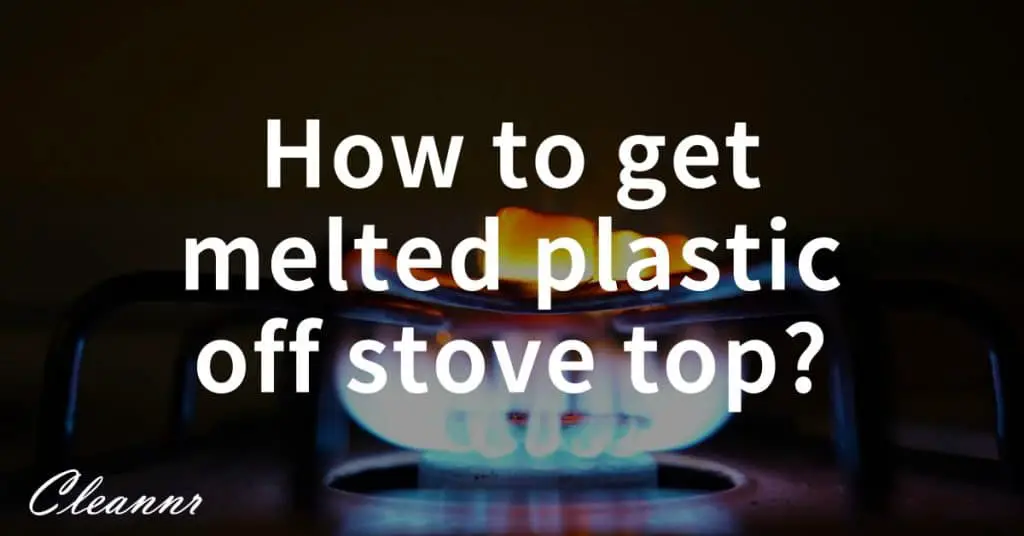Whether you’ve got an array of kitchenware or simply a single glass cooktop stove in your home, cleaning these surfaces is inevitable. Sometimes when we clean them, we can make the situation worse by using dangerous cleaning products that are too abrasive. So, how to clean a glass top stove with baking soda and peroxide?
When cleaning a glass top stove, first prepare the surface with mild dish soap, sprinkle on pasta made of baking soda, peroxide, and water. Let it sit for ten minutes, then scrub it with an old toothbrush. Rinse and wipe thoroughly so it looks spotless in the end.
In the following paragraphs, I’ll explain how to clean a glass top stove with baking soda and peroxide step-by-step. After reading this article you’ll gain the knowledge you need to independently clean your glass top stove with natural products.
Contents
- How to clean a glass top stove with baking soda and peroxide? Simple steps included
- Can hydrogen peroxide be diluted with water?
- How to clean glass cooktop – other methods
- How to prevent damaging glass top when cleaning
- How to keep your glass cooktop clean?
- Best Hydrogen Peroxide Cleaner: Lysol Hydrogen peroxide cleaner
- FAQs
- Final word
How to clean a glass top stove with baking soda and peroxide? Simple steps included
Cleaning a glass cooktop stove can be challenging if you don’t know the right tools to use. I mean, no one really enjoys scrubbing a stovetop or cleaning with bleach or other harsh chemicals.
That’s why I prefer to clean with baking soda and peroxide—the natural way!
Besides baking soda and 3% concentration hydrogen peroxide, I also use dish soap, a scrub brush (or old toothbrush), and microfiber cloth (or paper towels).

Here are the main steps to follow when you want to know how to clean a glass top stove with baking soda and peroxide:
-
Clean surface with dish soap
This is a preparation step. Start by cleaning the glass stove top with dish soap. Use a soft cloth or sponge to wipe down the entire surface of your stovetop. Rinse it off with warm water and dry it thoroughly with a clean towel.
-
Create a Cleaning Paste
In a small bowl, put baking soda, water, and hydrogen peroxide until you create a paste. The mixture should be thick enough to spread across the surface of your stovetop.
Spread your cleaning paste over all areas of your glass stove top and let it sit for about ten minutes.
-
Scrub the Paste
Use an old toothbrush or sponge brush to scrub away any food particles or stains on your glass surface. Scrub carefully in circular motions. If there are still any stubborn stains remaining after scrubbing, repeat this step until you get rid of them all.
-
Remove Stains
Make sure you rinse thoroughly after scrubbing so you don’t leave behind any residue from your paste that could scratch or damage your glass surface.
For the best results soak an old rag or paper towel in vinegar and rub it over the stained area. Let this sit for several minutes.
-
Wipe the Glass Stove Top
Wipe down your glass stove top until it is completely free of stains and peroxide and soda residues. Once all of the stains have been removed, wipe down your glass stove top one more time with warm water and dry with a clean towel.
Can hydrogen peroxide be diluted with water?
If you’re worried about can hydrogen peroxide be diluted with water, the answer is: YES, it can.
Hydrogen peroxide is an antiseptic that kills bacteria and helps remove dirt from all kinds of surfaces or even your skin.
However, if you decide to use it on your skin (to disinfect wounds), don’t do it on your own. You should consult your doctor or a local pharmacist before use.
How to clean glass cooktop – other methods
Glass cook tops are great because they’re easy to clean and look great. But when you’re cooking, grease splatters all over the place.
If you don’t clean it off regularly, it can be a pain to do later. Here are several other ideas about how to clean glass top:
Boiling water
Simple as it is. Pour boiling water onto your cooktop, wait for a while, and wipe it off with paper towels.
White vinegar
Pour white vinegar onto a cloth and wipe the area where grease has been splattered on your cooktop. Remember that vinegar should never be used on stainless steel or aluminum surfaces!
Baking soda and lemon
Sprinkle baking soda into an empty spray bottle, add a few drops of lemon juice, then shake well before spraying onto areas where grease has been splattered on your cooktop.
Soap and water
This is the easiest way to clean your glass cooktop, but it’s not always the best one. The best way to do this is to use a spray bottle filled with warm water and dish soap, then wipe down the stovetop with a soft sponge or cloth.
Commercial cooktop cleaner
Commercial cleaners can be used on glass cooktops without worry, but make sure you follow the directions on your exact brand of cleaner carefully—some may require you to use an abrasive pad after application, while others will not.
Razor scraper
If all else fails, try using a razor scraper to remove any residue that won’t come off with other methods. Just be careful not to scratch the surface!
How to prevent damaging glass top when cleaning
When you clean your glass top stove, you need to use the proper tools and techniques. The wrong cleaning method can damage the glass surface.
Here’s how to avoid damaging your glass cooktop when you clean it.
Avoid steel wool
Steel wool is not recommended for cleaning glass top stoves. It’s too abrasive, and it can scratch or wear down the smooth surface of your cooktop.
If you have a stubborn spot that needs extra scrubbing power, use a paste of baking soda and water instead. That will work just as well without causing any damage to your stovetop.
Skip scrubby sponges
Scrubby sponges are another no-no when it comes to cleaning glass top stoves. Their rough texture can easily scratch off pieces of the glass surface, making it more difficult for you to wipe away food residue during cooking.
Instead, use a damp paper towel or microfiber cloth with mild soap or dish detergent as needed to remove stains from your stovetop before washing it in hot soapy water.
Wipe Gently
When wiping up spills on your glass cooktop, be sure not to wipe too hard with a sponge or cloth that might scratch off pieces of the glass.
How to keep your glass cooktop clean?
The most important thing when you’re thinking about how to keep your glass cooktop clean is to clean it frequently. Some cleaners might help you against dirt and grease.
Car wax
A great way to keep your glass cooktop clean is to use car wax. It’s easy to apply and it will protect your cooktop from scratches and stains, so you can use it for years to come.
You can find car wax at any auto parts store and most major grocery stores.
Baking soda and vinegar
Another great way to keep your glass cooktop clean is baking soda and vinegar. Just mix equal parts of baking soda and vinegar in a small bowl, then wipe the mixture onto your cooktop with a damp cloth or sponge.
Let it sit for several minutes before wiping off with another damp cloth or sponge.
All-purpose commercial cleaner
Finally, you can use a commercial all-purpose cleaner that contains ammonia as one of its active ingredients to keep your glass cooktop clean!
This method has been used by many professional chefs who have found that it works better than anything else they’ve tried!
Best Hydrogen Peroxide Cleaner: Lysol Hydrogen peroxide cleaner
Hydrogen peroxide is a good choice for cleaning bathrooms and kitchens because it’s effective at removing microorganisms, including bacteria, yeasts, fungi, viruses, and spores.
Look for a 3-6% solution to get the most disinfecting power when making your all-purpose cleaner.
Per my experience best hydrogen peroxide cleaner is Lysol and below you can see why.
Lysol Hydrogen peroxide cleaner is the best hydrogen peroxide cleaner on the market. It kills 99.9% of viruses and bacteria, without the harshness of bleach.
It also doesn’t leave behind any harsh chemical residue, which means you can clean with confidence knowing that your surfaces will be free of germs and bacteria—and that there won’t be any harmful residue left behind.
Finally, the cleaner dissolves grease and soap scum, leaving your surfaces looking spotless.
FAQs
In this section, you’ll find answers to some of the most common questions. Let’s check them out!
Can you use peroxide to clean a glass top stove?
Yes, you can use peroxide to clean a glass top stove. The key thing to remember when using peroxide on your glass top stove is to make sure that you don’t get it on the burners or heating elements themselves. If you do get it on these areas, it can cause damage and ruin your stove.
Can you use baking soda to clean a glass top stove?
Yes, you can use baking soda to clean a glass top stove.
This is a great option for cleaning the stove because it will not scratch the surface and it is safe to use on all types of glass stoves, including ceramic and induction.
How do you get burnt on grease off a glass-top stove?
To get burnt-on grease off a glass top stove, you first need to scrape it off with a spatula. Then make a baking soda paste and smear it over the stain using a sponge, covering it with a damp cloth for 30 minutes before wiping it away.
Final word
So remember, be sure to use only soap safe for glass-top stoves. The key here is cleaning often and taking care of your stovetop if you want to keep it in good, clean shape!
This will reduce the build-up that can cause your glass to crack and ensure the longevity of your stovetop.
That’s all there is to it. Hopefully, you won’t have any major issues in the future.
If you feel like you need any other information about baking soda and peroxide, or you’re willing to share your experience on this topic, feel free to leave a comment.
Also, you can follow my social media accounts and enrich our community. Happy cleaning!


